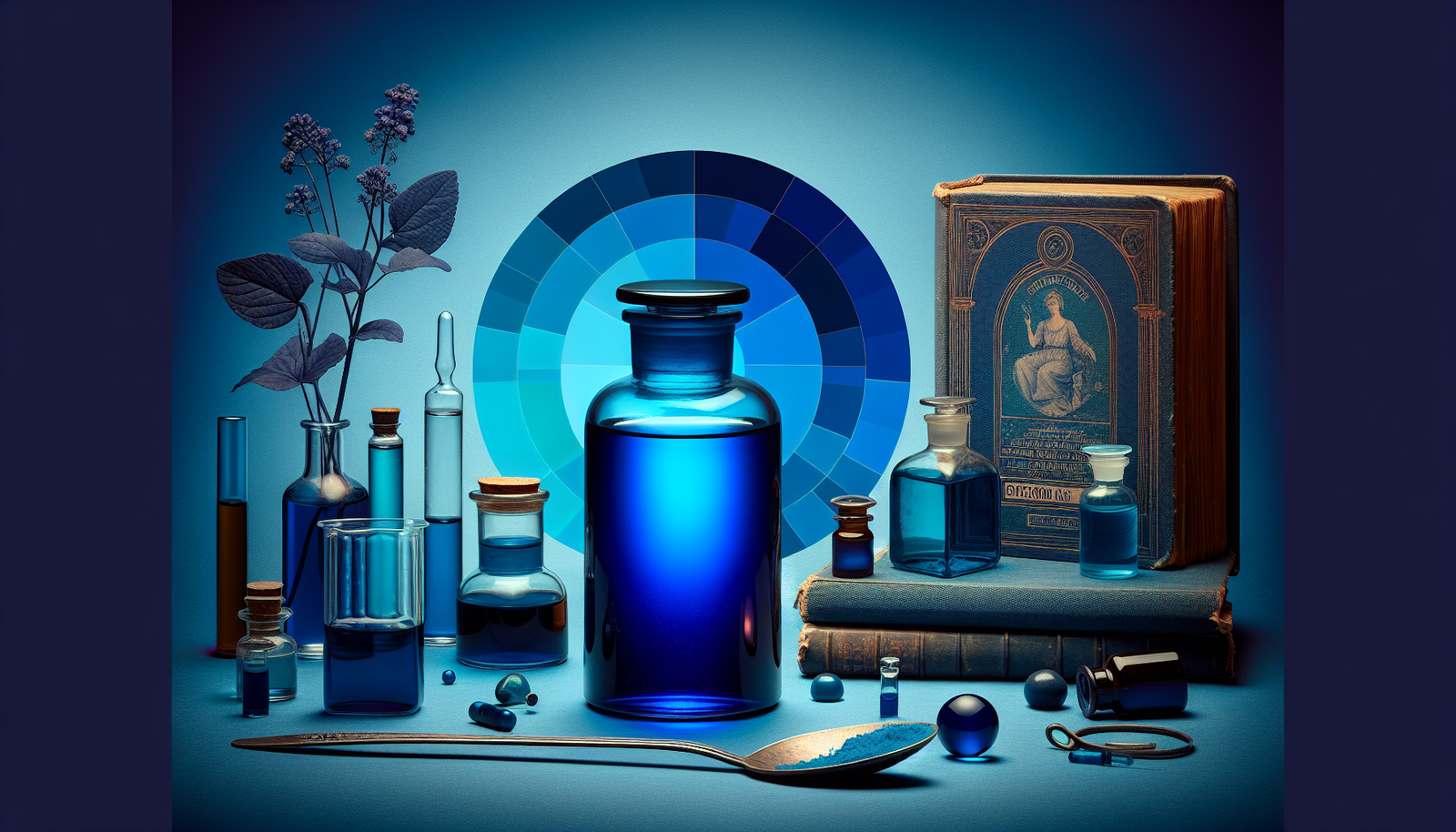
What if a simple dye could transform medicine and reshape our understanding of therapy? Methylene blue, initially synthesized in the 19th century as a fabric dye, has a fascinating and somewhat convoluted history that reveals its unexpected journey into the realm of medicine. Understanding this transformation not only highlights the importance of scientific innovation but also underscores the interconnectedness of various fields—chemical, medical, and even psychological.

The Chemical Background of Methylene Blue
The story of methylene blue begins in the late 1800s with the emergence of synthetic dyes. Initially discovered by Heinrich Caro in 1876, methylene blue was formulated as a dye for textiles and other materials. Its chemical composition consists of a thiazine dye, identified scientifically as “methylthioninium chloride,” recognized for its striking blue hue.
Early Uses in Dyeing
At the time of its invention, synthetic dyes revolutionized the textile industry, providing vibrant hues that were previously unattainable through natural dyes. Methylene blue gained popularity quickly and was used in various applications from clothing to home decor. The dye’s stability and non-fading properties made it a desirable option for manufacturers, marking a significant transition from traditional dyeing practices.
Chemical Properties
Methylene blue is characterized by its unique molecular structure which renders it soluble in water at certain pH levels. This characteristic allows it to interact with biological systems effectively, making its later medicinal applications all the more fascinating.
Transition from Dye to Drug
The story of methylene blue began to shift dramatically around the turn of the 20th century when researchers recognized its potential beyond mere coloration. A pivotal moment occurred when scientists began studying the substance’s impact on biological systems.
Initial Medical Applications
The first significant medical application of methylene blue arose in the late 1880s and early 1890s. Researchers discovered its efficacy in treating malaria. It was one of the earliest synthetic drugs employed for the treatment of this pervasive disease, showcasing methylene blue’s potential in the realm of medicine.
Discovering Antiseptic Properties
Shortly thereafter, its antiseptic properties became apparent. Physicians began using methylene blue in the treatment of infections, as it was shown to be effective against various pathogens. This realization placed methylene blue on the radar of medical professionals as a promising agent in combating infectious diseases.
The Role in Hematology
As the 20th century continued, methylene blue solidified its position within the medical field, particularly in hematology. It became recognized for its role in diagnosing and treating methemoglobinemia, a condition where the blood cannot effectively transport oxygen due to the iron in hemoglobin being oxidized.
Mechanism of Action in Methemoglobinemia
When administered in small doses, methylene blue assists in reducing methemoglobin levels back to normal by facilitating the reduction of iron back to its ferrous state. This process enables the blood to regain its ability to carry oxygen efficiently, providing essential relief to patients suffering from this condition.
Clinical Protocol for Treatment
The clinical application of methylene blue in treating methemoglobinemia often involves the following protocol:
| Dosage Formulation | Administration Route | Frequency |
|---|---|---|
| 1-2 mg/kg IV push | Intravenous | Once every 1-2 hours until methemoglobin levels normalize |
This simple protocol underscores the effectiveness and efficiency of methylene blue in providing immediate medical care.
Broader Therapeutic Applications
The therapeutic potential of methylene blue extends beyond its initial discoveries. Its versatility has been explored in various areas, leading to research on its utility in neurobiology, antimicrobial treatments, and even psychiatric disorders.
Neuroprotective Effects
Emerging studies highlight methylene blue’s neuroprotective effects, particularly in conditions like Alzheimer’s disease and Parkinson’s disease. Researchers found that low doses could not only protect neurons from damage but also improve mitochondrial function, ultimately enhancing cognitive and neural resilience.
Methylene Blue in Psychiatry
In the realm of mental health, methylene blue has been investigated for its potential benefits in managing conditions such as depression and bipolar disorder. Its influence on neuronal pathways and serotonin modulation has fueled interest in its applicability as an adjunct treatment option in conventional psychiatric care.

Current Status and Future Directions
Today, methylene blue continues to be a subject of extensive research. Its journey from a simple dye to a multifaceted medical compound serves as a testament to the intersections of chemistry, biology, and medicine.
Regulatory Perspectives
Despite its long history and promising applications, methylene blue is not without regulatory scrutiny. The FDA approved its use for specific medical indications, emphasizing the need for comprehensive studies to evaluate its efficacy and safety in broader applications.
Future Research Avenues
As research evolves, the potential future applications of methylene blue may include:
- Antiviral Properties: Studies are underway to examine its possible effects against viral infections, including HIV and SARS-CoV-2.
- Cancer Therapy: Initial findings indicate that methylene blue may have therapeutic applications in oncology, possibly serving as a photosensitizer in photodynamic therapy.
Implications for Healthcare
The story of methylene blue underscores critical implications for contemporary healthcare practices. Its historical significance highlights the importance of interdisciplinary collaboration between chemistry and medicine.
Lessons from History
The evolution of methylene blue offers valuable lessons about the unpredictable nature of scientific discovery. Initial applications, driven by industrial needs, transitioned into life-saving medical uses—translating theory into practice.
The Value of Innovation
Healthcare professionals must remain flexible and open-minded when considering the integration of traditional and novel treatments, recognizing that solutions may often arise from historical and sometimes unexpected contexts.
Conclusion
In tracing the history of methylene blue from its inception as a dye to its prominent place in medicine, we uncover a rich narrative filled with discovery, innovation, and application. Yours is a field continually shaped by these interwoven stories of science—where a simple substance can encapsulate decades of change and progress. Understanding the past enables better preparation for future advancements, instilling a sense of collaborative inquiry within the healthcare landscape.
As you navigate the complexities of medicine, may the journey of methylene blue inspire you to remain curious, creative, and open to the possibilities that lie ahead.